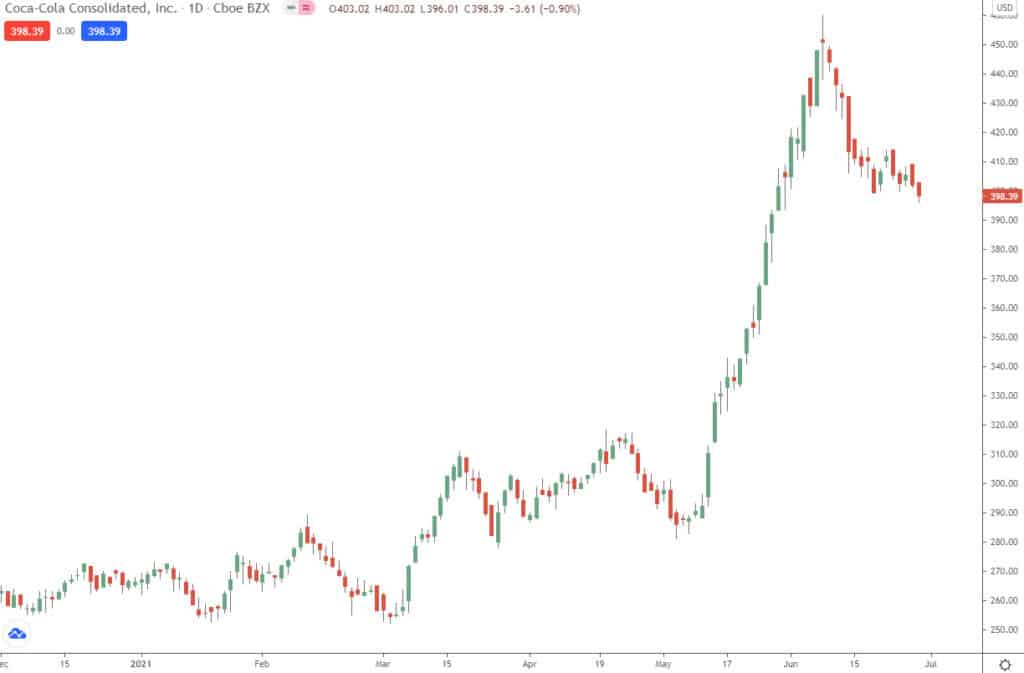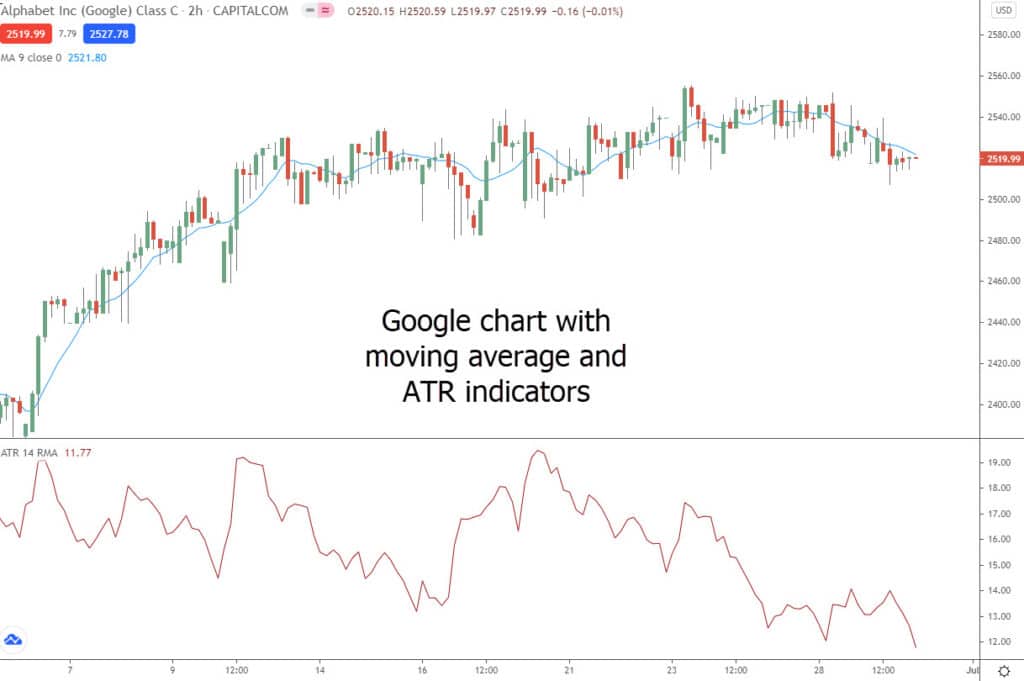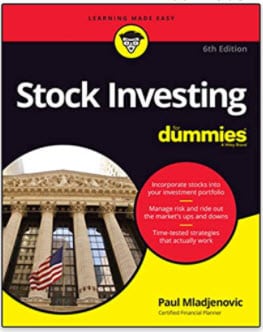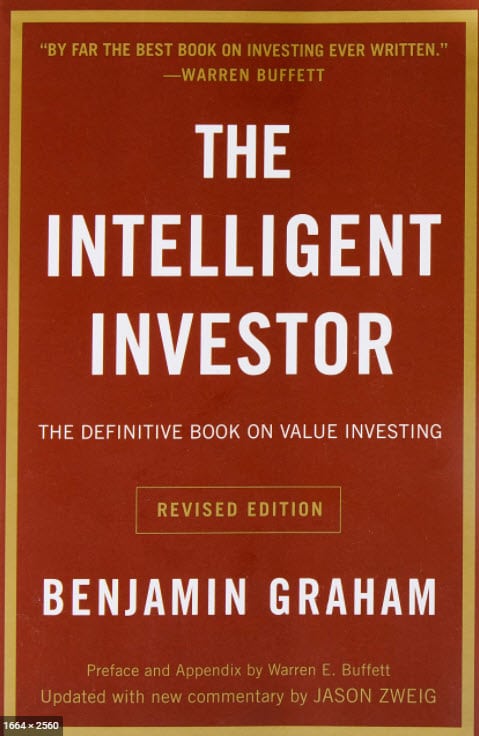As unemployment ravaged the labor market during the coronavirus pandemic, many people turned to the stock market to substitute their income or replace the lost income.
When trading in the stock market, you require some basic knowledge to get started. You also must be registered with an authorized online broker since nearly all stock market transactions are done online.
In this guide, we discuss the stock market basics and equip you with everything you need to start your stock trading journey.
NOTE: You can get your free basics of stock market trading PDF below.
What is a Stock?
The stock is an old form of investment that works surprisingly simply; a company issues securities that embody a piece of the company itself.
In other words, whoever owns the shares, has a say in how the company is run. If the business is going well, they also benefit by increasing the value of their shares and sometimes by paying out or distributing part of the profits (dividend).
What is the Stock Market?
The stock market is the market where companies issue securities to cover their financing needs. Investors who buy such securities become shareholders of the company and receive a dividend. The size of the dividend depends on the company’s profits.
You can buy securities from all the companies listed in the various financial centers of the world. An efficient and functioning stock market is considered critical for economic development, as it offers companies the opportunity to collect capital from investors.
The stock market is divided into the following submarkets:
- The primary market (also called the issuance market or first market), where the shares of a company are traded for the first time, i.e., during the IPO. The initial issue of shares is called IPO (Initial Public Offering). The capital generated flows to the issuing company.
- The secondary market (also known as the circulation market), where shares already issued are traded. The financial securities are sold from investor to investor without capital flowing to the issuing company.
The stock market has two essential functions.
The first is the provision of capital to companies with which they can finance and expand their businesses. By selling shares instead of raising the capital needed for expansion in loans or bonds, the company avoids borrowing and the associated interest burden.
The second function of the stock market is to allow investors to participate in the profits of listed companies.
Investors can benefit from stock purchases in two ways. Some stocks pay regular dividends so that shareholders can earn a regular income. The other option is to sell shares at a profit if the share price rises against the purchase price.
NOTE: You can get your free basics of stock market trading PDF below.
Stock Trading for Beginners
Just like any financial market, the stock market operates based on the system of supply and demand. If you buy shares, there is hope that other investors will also find interest in acquiring shares in the same company. If the popularity of a stock increases, buyers will increase the bids to necessarily acquire shares of it, thereby increasing the selling price.
In theory, an increase in a company’s stock price results from improved economic value and potential also called “fundamentals”. In reality, stock prices change due to various causes; only a few can be foreseen as an investor.
On online exchanges, you can usually trade ordinary shares.
How to Learn the Stock Market
When trading securities on the stock exchange, there are two schools of thought on selecting your investments.
- The first is fundamental analysis. It relies on financial reports and public statements of a company to estimate the industry’s financial health.
- The second school of thought is called technical analysis. It is assumed that the price of stock swings back and down, following a certain pattern that you can learn to track down to profit from it.
However, technical analysis is not as widely accepted as fundamental analysis. Many traders use a mixture of both techniques to look for the right investments.
Selecting a stock with tangible “fundamentals” and occasionally taking a technical indicator to trade is a safer strategy than relying on just one technical indicator.
Before you decide to buy or sell a company’s share, you should first deal with its management and competitiveness.
Typically, online brokers provide comprehensive summaries with the latest news, stories, financial statements, analysis, and historical charts to get an insight into different companies. This gives you a comprehensive picture of a company whose shares you intend to acquire.
Learning to trade starts with financial literacy. Reading the news and financial websites, listening to books on the topic, listening to various podcasts, and attending investment courses are ways to gather information.
You can also join a local investment association or join online financial groups to exchange ideas with more experienced traders and benefit from them. However, reading is no substitute for experience. If you want to collect these without capital investment, demo accounts are available.
Another way to practice is trading on the “penny stock” market. Many different companies offer shares in the price range of a few cents per share. This makes it very easy to experience leverage, market trends, and profits, which have no significant impact because you are in a minimal price range.
Investing for Beginners
A stock market is an ideal place for beginner investors since it offers the opportunity for both long-term and short-term investment.
Some of the most prominent stock market investors like Warren Buffet have historically employed buying and holding stocks for the long haul.
The big question, of course, is why the value of stocks should continue to grow so continuously in the future. After all, the stock market development is uncertain.
No one knows where the world stock market will be in a few years. You can derive a certain pattern for the future from the returns of the past. But there remain forecasts that may or may not come true.
As the economy grows, corporate profits increase too. Profits, in turn, are the long-term fuel for rising share prices.
You don’t have to be an expert to realize that a company becomes more valuable with annually increasing returns. This connection is also confirmed by research. Studies show that stock prices follow profits in the long run. Accordingly, investors can continue to have the right to hope for rising share prices as long as the global economy continues to grow.
Note that economic growth does not automatically have to do with high resource consumption. Even a recycling company or a media group can be very profitable and grow.
The purpose of a company is to make a profit. In other words, it wants to earn more money from selling a good or service than its production has cost. Of course, sometimes it works better, sometimes worse, and sometimes not at all. But, if you consider a large group of companies over a longer period, they should make profits on average.
It is to be expected that the owners, in this case, the shareholders, will get more out of it in the long term compared to saving in the bank account instead of in shares. Because otherwise, of course, they would do that – what else would they bother with the whole business operation?
One representation of this is the “hierarchy of the capital market”. Savers invest money in banks. Banks lend it at a higher price (interest rate) to make a profit themselves. Large borrowers, in turn, are companies. They are also aiming for a profit – and as a result, they want to give their shareholders a higher return than the loans taken out for it have cost, so the matter is worthwhile.
Trading the Stock Market
Trading the stock market isn’t any different from any other type of financial trading. You can go long (buy and sell when the price increases) or short (sell and buy back when the price drops).
These two stock market trading strategies offer the best trading opportunities for day traders.
Day trading, also called intraday trading, is a stock trading strategy where traders close all their open positions within the trading day. It gives the traders the chance to benefit from short-term price fluctuations.
Typically, day traders often use leverage (margin trading) to increase their profits. This is made possible by CFDs – which we discuss in the next section.
With this strategy, stock traders can trade on any stock exchange globally.
That’s the primary advantage of online stockbrokers; they operate 24/5, which means you can trade any time you want. However, keep in mind that not all stock exchanges open at the same time. They only operate during business hours. This is usually from 9 AM to 4 PM local time.
Buying Stocks or Using CFD’s
The key difference between holding a long position with a CFD and buying security is the ability to make leveraged trades. The CFDs are traded on margin. This means that a trader can open larger positions based on the amount of his initial capital.
| Contracts for difference (CFDs) | Traditional stocks |
| Trade from a contract to margin. The value is derived from a basic instrument that you do not own. Suitable for intraday, day, and medium-term trading | The purchase and sale of deliverable shares of a company on a stock exchange. More suitable for long-term trading |
| You trade CFDs with leverage to achieve greater exposure with your initial capital. | You pay the full value of your trade-in advance. |
| CFDs are exempt from stamp duty. | When buying shares, you pay stamp duty on the transaction. |
| CFDs allow you to open a long or short position so that you can benefit from rising and falling markets. | When buying shares, you can only benefit from rising prices. |
| You can trade various financial instruments: stocks, indices, commodities, currencies, and cryptocurrencies. | You can only trade stocks. |
| They trade around the clock in numerous markets. | They only trade during stock exchange opening hours. |
| No shareholder privileges. | You get shareholder privileges. |
Investing for Dividends
Shareholders are involved in the company’s success and regularly receive a dividend, provided that the company generates profits. At the end of a financial year, a company can make such dividends as bonus payments. The dividend is an important part of an investor’s return. It is based on the company’s earning power, economic situation, and dividend policy.
Most stock market investors who do not intend to hold their stock for longer can buy a company’s stock towards the end of the financial year. This makes them eligible for dividends.
Typically, your stockbroker provides the dividend calendar on their website.
To evaluate a company’s dividend, an investor can calculate the dividend yield. It results from the following formula:
Dividend yield = (dividend / share price) x 100%
The dividend is related to the current share price. Only from combining these two values can one judge whether the dividend payment is attractive or not: the higher, the better.
Basics of Stock Market Trading Books
Some of the best stock market investors have horned their trading and investment habits from books throughout history.
While there are thousands of stock market trading books, the two most consequential ones are “Stock Investing for Dummies” by Paul Mladjenovic and ‘The Intelligent Investor by Benjamin Graham.
Stock Investing for Dummies by Paul Mladjenovic
This is a bestselling guide for remaining a steady investor throughout the highs and lows of the stock market cycle. It simplifies the stock market for a beginner investor who might have otherwise drowned in the noise of stock market investing. It gives the best suggestions of what to do and buy when the market is down.
The book covers every aspect of investing, from the financial mindset and how to overcome the emotional aspect of investing. It advises on how to conduct proper company analysis and what to look for in financial statements.
The Intelligent Investor by Benjamin Graham
This book is considered the ultimate guide to stock market investing. Benjamin Graham is hailed as the greatest investment guru of recent history – having mentored some of the best stock market investors, including Warren Buffet.
The book details six primary principles for investing in the stock market:
- Understanding the company and the business you invest in.
- Having a margin of safety in your investment.
- Having confidence in your investment analysis.
- Know the management of the company you invest in.
- Only invest based on the fundamentals, not popularity.
- Accumulate your profits gradually – do not go for quick gains.
Lastly
Investing in the stock market can seem daunting at first. But with this guide, you can be on your way to investing in the stock market like the pros. We hope you find the guide informative and useful.
NOTE: You can get your free basics of stock market trading PDF below.

Stelian is an aggressive, success-driven, and highly collaborative entrepreneurial trader with 13 years of experience trading within financial markets.
Stelian is a disciplined investor with a passion for trading and a solid understanding of global markets.




